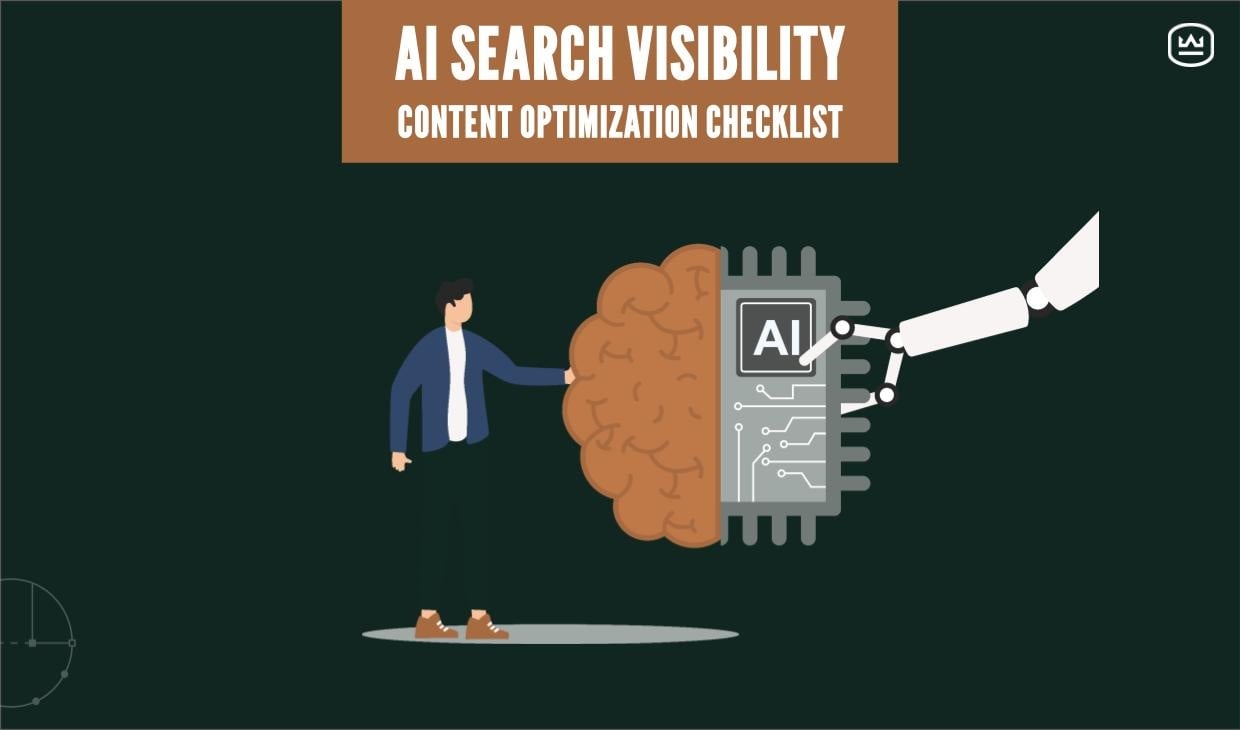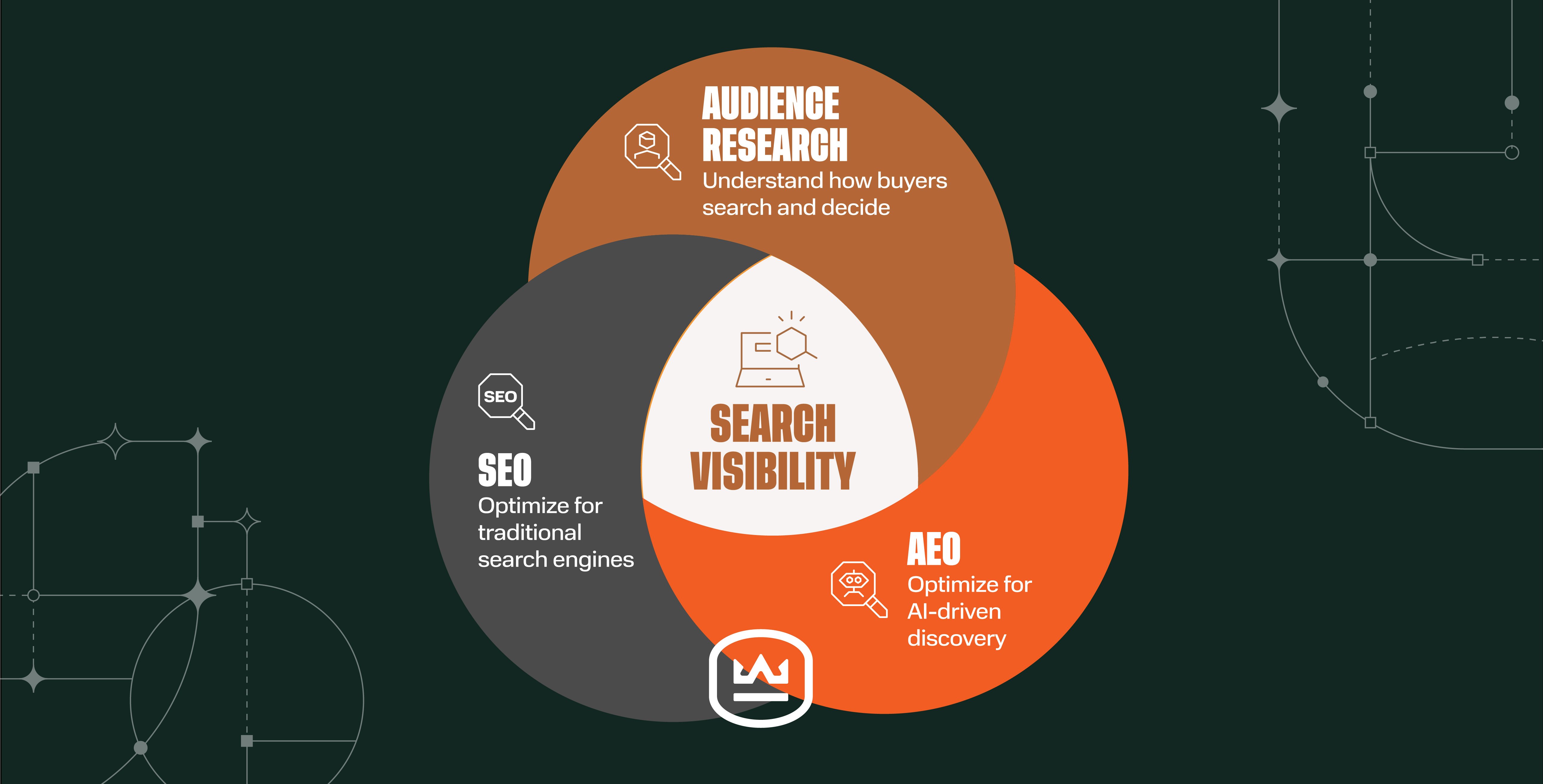How to Evolve Your SEO for What Matters Most Right Now
Written by
Search engine optimization remains a critical element of digital marketing and lead generation, but the way we approach it needs to evolve if we want it to keep driving business growth.
In a recent episode of The ChangeOver Podcast, I joined Weidert Group President Greg Linnemanstons to discuss how the SEO landscape is shifting and what industrial marketers need to do now to stay competitive.
TL;DR: Rely on traffic metrics as the primary measure of success at your own risk. Today’s SEO is about reaching the right audience with the right content at the right moment — focusing on strategies that drive meaningful engagement and real business outcomes.
Watch, listen, and read on for the details.
From Chasing Traffic to Building Business
Generally, SEOs used to approach the work like a predictable, reliable formula: find the right keywords, use them to create content that ranks, and watch the traffic come in. Until as recently as a couple years ago, the assumption was that more traffic inevitably meant more leads, which we trusted would eventually turn into sales.
But today it’s clear — the old math doesn’t add up.
Many businesses are experiencing drops in organic traffic, but their sales numbers aren’t necessarily taking the same hit. So what’s going on? Buyer behavior is shifting. Fewer people are starting their searches on Google. Instead, many are first turning to niche platforms, AI tools, and their own trusted networks for answers. And when they do use search engines, they’re often getting answers directly from the search engine results page (SERP), without clicking through to a website.
RELATED: Get all our Resources on AI for Marketing & Sales
Adjusting Your Strategy for the New SEO Landscape
These shifts mean we can’t afford to think of SEO the way we did even five years ago. Now, it’s time to focus instead on precision. Instead of trying to catch every possible website visitor who might fit your target profile, target the actual prospective buyers who matter most right now — those already considering a purchase.
That means starting with the bottom of the funnel and working your way up. Investigate the high-intent keywords that signal your ideal customers are in the buying process, and focus greater SEO resources there, ensuring your content is aligned with the needs of buyers who are ready to act.
Reframing Keyword Strategy: Focus on What Drives Revenue
Traditional keyword metrics like volume and difficulty can lead you astray, especially in B2B where the real value is in reaching the few people who truly matter. Instead, we think about the “business value score” of each keyword. This is about understanding which keywords are most likely to lead to actual revenue.
In our practice, we’re critically assessing keywords to determine their potential for driving real business outcomes. For example, if a keyword directly matches a decision-stage need, that’s where we focus. Even if only a few people search for it each month, those are the people we want.
For B2Bs and industrials, five strategically targeted searches can be worth much more than 5,000 irrelevant visitors coming in just to access some piece of tangential content.
SEO Is a Strategic Function, Not a Standalone Tactic
Another shift we need to make: thinking of SEO as a standalone tactic. SEO needs to be woven into every part of a B2B digital strategy, from content creation to user experience, from social media to email campaigns. It’s no longer about just checking the boxes on some SEO best practices checklist — it’s about understanding the entire buyer journey and optimizing every touchpoint in a way that’s people-centric.
For more about what I mean and how this works, queue up Episode 3 of The ChangeOver Podcast.
Practical Moves to Optimize Your SEO for Today’s Market
How can you begin to make this shift in your own SEO strategy? These are a few of the basics Greg and I covered:
- Zero in on high-intent keywords: Start with the keywords that indicate someone is ready to make a decision. Your SEO strategy should focus on guiding these visitors to the next step in their journey.
- Improve user engagement: Search engines are using engagement metrics like time on page and click-through rates more than ever to assess the value and quality of the website. Content needs to do more than rank; it needs to hold attention and build a connection by delivering value to the user.
- Showcase your authority: Use case studies, customer testimonials, and content that demonstrates expertise, industry leadership, and trustworthiness. Today, SEO is as much about building credibility and trust as it is about being found.
- Stay nimble: The SEO landscape is likely to keep changing, and quickly. Monitor trends, follow the news on algorithm updates, test your strategies, and be ready to pivot as new information comes in.
Make Your SEO Work as Hard as You Do
Bottom line: SEO still has immense value to help shape your digital marketing strategy, but it’s more nuanced than ever. It’s not about how many people you reach; it’s about reaching the right people with the right message at the right moment for them. If you adapt your approach to focus on buying intent, engagement, and authority, improved business outcomes will follow.
Hear in detail how to fine-tune your SEO strategy for today’s challenges. Check out the full episode of The ChangeOver Podcast at weidert.com/changeoverpodcast (or subscribe on your favorite audio platform). It’s a fast-moving conversation about what's working now and what’s coming next — to help you keep your competitive edge.
Subscribe To Our Blog
Information. Insights. Ideas. Get notified every time a new Weidert Group blog article is published – subscribe now!
You May Also Like...

Search Engine Optimization
How Falcon Rebuilt Industrial AI Search Visibility in 2025

Search Engine Optimization
The New Search Visibility Checklist for AI-Era Content Marketing

Search Engine Optimization
SEO Isn’t Dead. It’s Evolving: How B2Bs Can Stay Visible in the Age of AI
Accelerate Your Growth with
Weidert Group
If you’re ready to explore a partnership, request a personalized consultation with our team.

